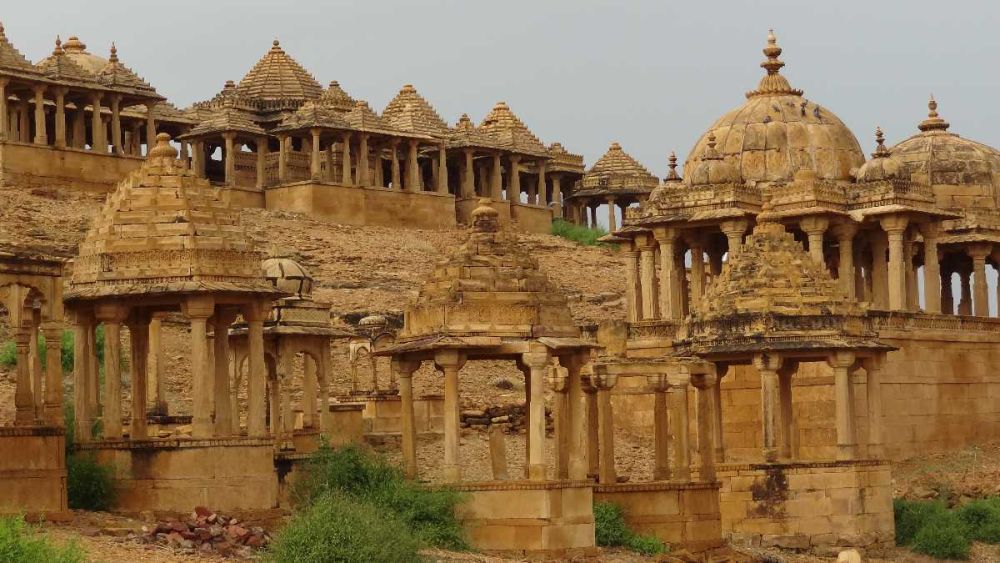

The city of Bikaner, nestled in the heart of the Thar Desert in the Indian state of Rajasthan, holds a rich cultural history that dates back to the 15th century. Among its many attractions, the Royal Cenotaphs, also known as Devikund Sagar, stand as a testament to the city's regal past and architectural ingenuity. These cenotaphs are the cremation grounds of the Bikaner royal family and provide a deep insight into the region's opulent history.
The tradition of constructing cenotaphs, or 'chhatris' as they are locally known, has been practiced in Rajasthan for centuries. The Royal Cenotaphs of Bikaner are an integral part of this tradition, dating back to the reign of Rao Bika in 1488. Over the years, these cenotaphs have become a revered site for the descendants of the royal family and a place of historical importance for visitors.
The cenotaphs are known for their intricate carvings, majestic architecture, and the use of red sandstone which reflects the craftsmanship and artistic sensibilities of the era. They are a popular tourist destination as they depict the royal heritage and contribute significantly to the tourism history of Bikaner.
The history of tourism in Bikaner can be traced back to the days of British India when the region began to gain prominence on the itineraries of international travelers and explorers. Post-independence, the city emerged as a cultural hub, attracting visitors to its palaces, forts, and festivals.
The Royal Cenotaphs have always been a crucial part of Bikaner's tourism appeal. They lure history buffs, architecture enthusiasts, and those interested in the royal heritage of India. The unique combination of art and history encapsulated in the cenotaphs showcases the erstwhile rulers' legacies and offers a spiritual context to the region's customs and beliefs.
In recent years, tourism in Bikaner, including the Royal Cenotaphs, has been impacted by the global trend of experiential travel. Visitors are increasingly seeking authentic experiences, prompting local stakeholders to offer more immersive opportunities.
Eco-friendly tourism also plays a role in today's industry trends. There is a growing emphasis on conservation, with efforts to maintain and preserve the cenotaphs attracting environmentally conscious travelers who are interested in sustaining cultural landmarks.
Additionally, digital advancements have made attractions like the Royal Cenotaphs more accessible to tourists worldwide. Virtual tours and enhanced online visibility through websites and social media have contributed to the awareness and interest in Bikaner's historical sites.
Cultural festivals and events are increasingly being organized around the cenotaphs, showcasing local arts, handicrafts, and dance, thereby embedding the cenotaphs into the cultural fabric of present-day tourism.
In conclusion, the Royal Cenotaphs of Bikaner serve a dual role in the realms of heritage preservation and as a catalyst for tourism development. As the city continues to adapt to contemporary tourism trends, the cenotaphs remain an enduring symbol of the glory and history of Bikaner.